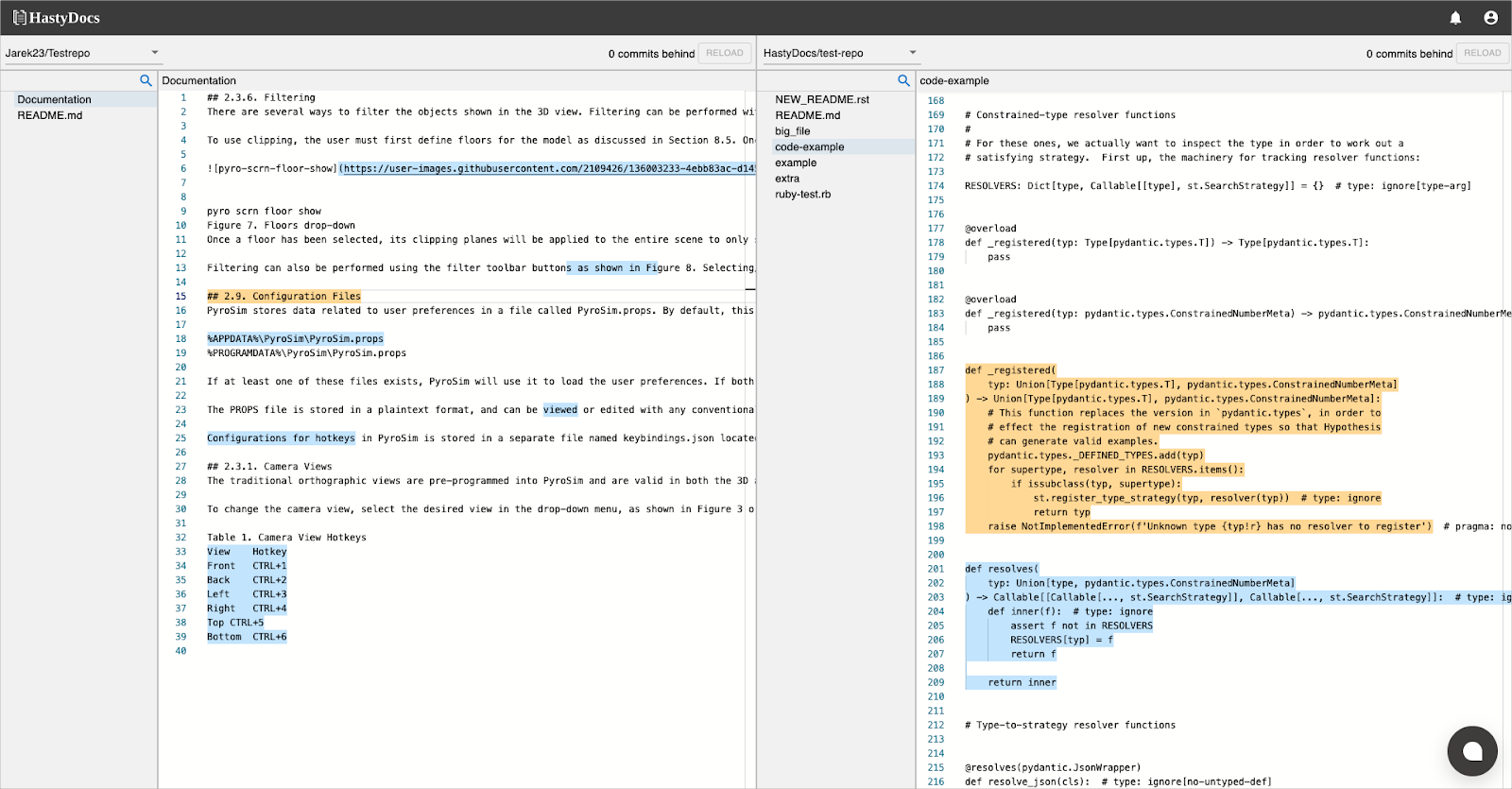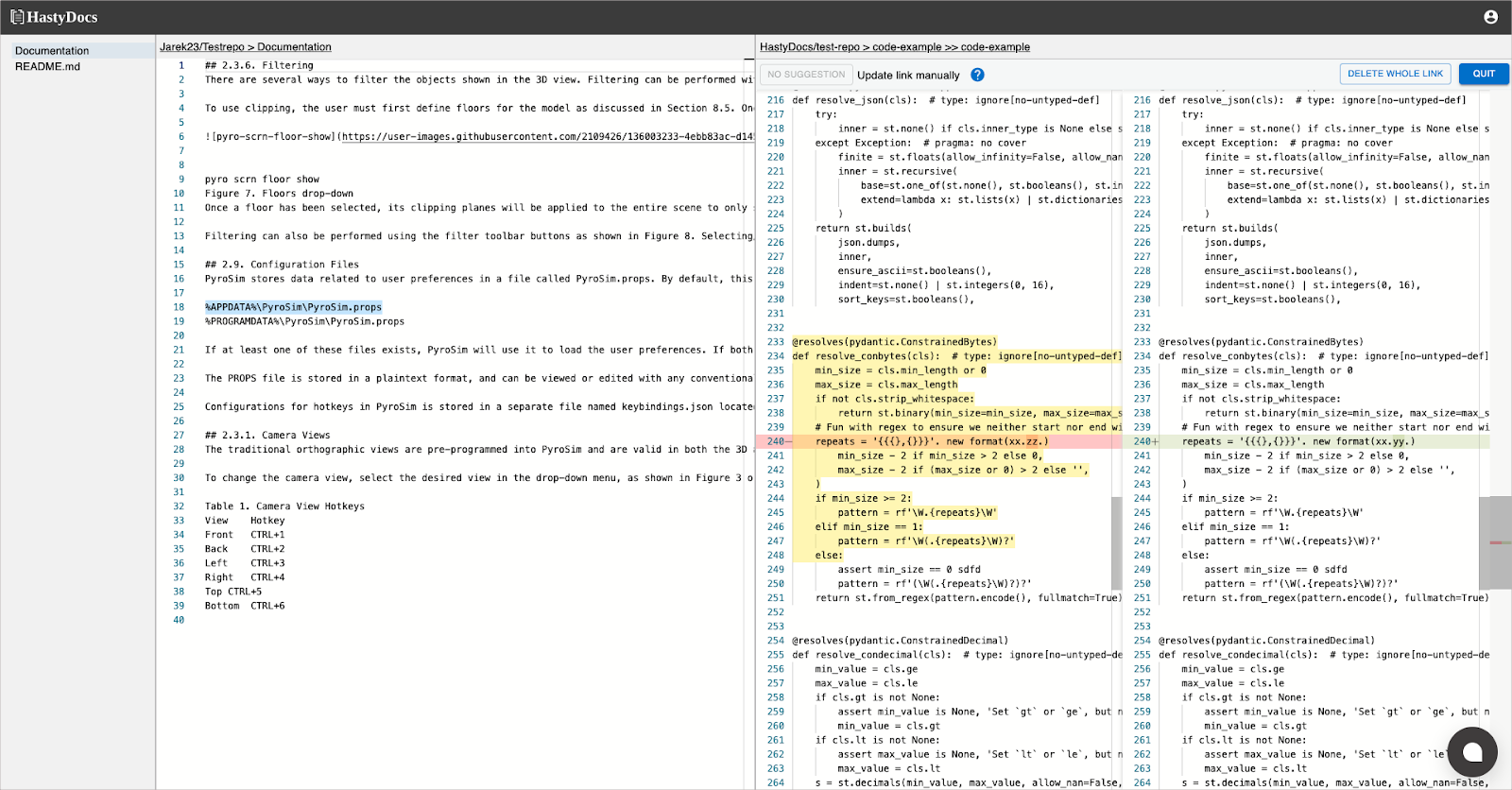HastyDocs: A new approach to keeping API documentation up-to-date, by Jarek Piotrowski
- The challenge of keeping docs up-to-date
- A new approach to keeping docs up-to-date
- How HastyDocs works
- Video demo
- Product roadmap
- About Jarek Piotrowski
The challenge of keeping docs up-to-date
A frequent challenge in writing and maintaining API documentation is keeping the documentation up-to-date when the code changes. Although API reference docs are often generated from code, the conceptual/tutorial docs written in Markdown (or similar) aren’t auto-generated. As such, it’s easy for engineers to make updates to the codebase but then never update the Markdown documentation.
With most product documentation, the content isn’t generated from the code. This means we are left to rely on manual processes to track all the changes in the software that should be reflected in the documentation.
Addressing doc maintenance strategies, The Good Docs Project says that “it is difficult to keep documentation up-to-date with the rapidly evolving software it describes. Doing so typically requires a multi-pronged strategy.” Some of these strategies involve “periodic reviews,” “minimising the content footprint,” and “writing timeless documentation.”
However, when we rely on human judgement and memory to make all the necessary updates when the code changes, we often make errors. Compounding the difficulty, technical writers often work across a large number of products in the company, making it hard to remember the whole landscape of docs and code. They sometimes work with dozens of engineering teams, unaware of what commits and other changes these engineering teams are making.
Additionally, as Daniel Khaneman points out in Thinking Fast and Slow, the human mind and memory are susceptible to cognitive biases, making it difficult to consider and remember all the places that need to be updated in docs. A technical writer might think only to update content that he or she worked on, rather than legacy docs written by someone else (who since transitioned elsewhere), but which are also affected by the codebase changes.
To sum up, except for reference documentation, we often rely on weak, error-prone tools and processes for keeping documentation up-to-date. We need a better, more automated way to know when code changes and exactly which docs might need to be updated as a result.
A new approach to keeping docs up-to-date
To address the problem of keeping docs up-to-date, we designed a new software product called HastyDocs. Every time your code changes, HastyDocs tests which parts of documentation needs review and automatically sends a notification to the right person.
Here’s a screenshot showing the HastyDocs interface:

HastyDocs creates links between code and the docs in places that you think will require a review of the docs when the code changes. You can create multiple links to any place in documentation or the code base. (Our assumption is that, besides the most high-level conceptual documentation, most product documentation is based on the features of the product encapsulated in the code base.)
In your Markdown files (or any text files with documentation), you can link any of the following to the code base:
- Text of documentation (titles of sections and subsections, description of a how a feature works or looks)
- Screenshots and other visuals
- Code samples
When you have these links set up, every time parts of the code base change, HastyDocs automatically tests documentation to check if code linked to docs has changed. If the code has changed, you receive notification to look over various Markdown files that are associated with that changed code base.
The following screenshot shows a split view of the code base pane showing a before and after view so you can see what changed. Based on these changes, you can then evaluate whether the Markdown docs also need to be updated.

Beyond keeping product documentation up to date, HastyDocs could assist onboarding efforts for internal teams as well. For example, to accelerate onboarding, new developers could quickly view and understand the code base as they read the docs.
HasyDocs is also agnostic to code programming languages and documentation markup languages as long as they are stored in a Git repository.
How HastyDocs works
HastyDocs assumes your code is stored in a Git repository. When you import docs and code to HastyDocs, you give HastyDocs read-only access to your repository, based on which we constantly monitor all the changes in the code. Here’s how it works:
- HastyDocs connects to your repositories with code and documentation (we have read-only access).
- When you tag parts of the code and documentation, it creates a link between the two.
- We send you a notification once the code changes, so you know which parts of the docs to review. You no longer have to manually go through all the changes in the code base.
- As we take link context into account, you also get notified once the content around your link changes. This way you are notified not only when your linked code changes but also when someone extends the existing functionality.
Video demo
Here’s a video demo showing how HastyDocs works:
Product roadmap
This is the first version of HastyDocs, and we have a long roadmap of features to create — for example, integration with CI/CD processes, Pull Requests/Merge Requests on Github/Gitlab and automatic link generation. We want to prioritize these upcoming features with our first users. To learn more about HastyDocs, please sign-up on our website or email me directly at [email protected].
About Jarek Piotrowski
Jarek Piotrowski is an ex-Business Development Director at a financial technology company where he encountered the problem of keeping documentation up-to-date and together with Marek Majde (company’s CTO) and Przemek Łada decided to launch HastyDocs. Jarek is passionate about product development, user experience, and designing products that solve users’ problems. In his spare time Jarek likes to travel with his family and read psychology books.
